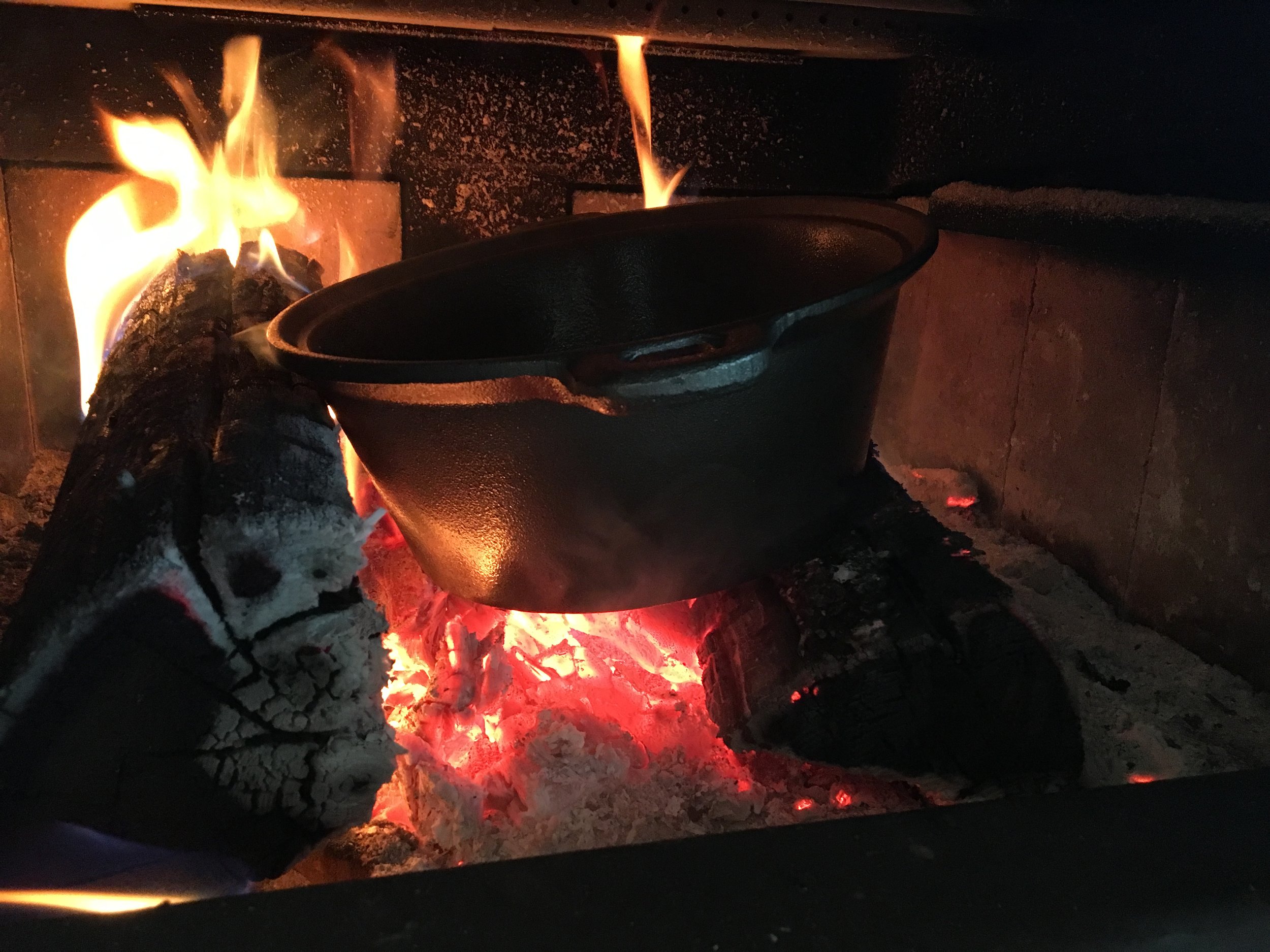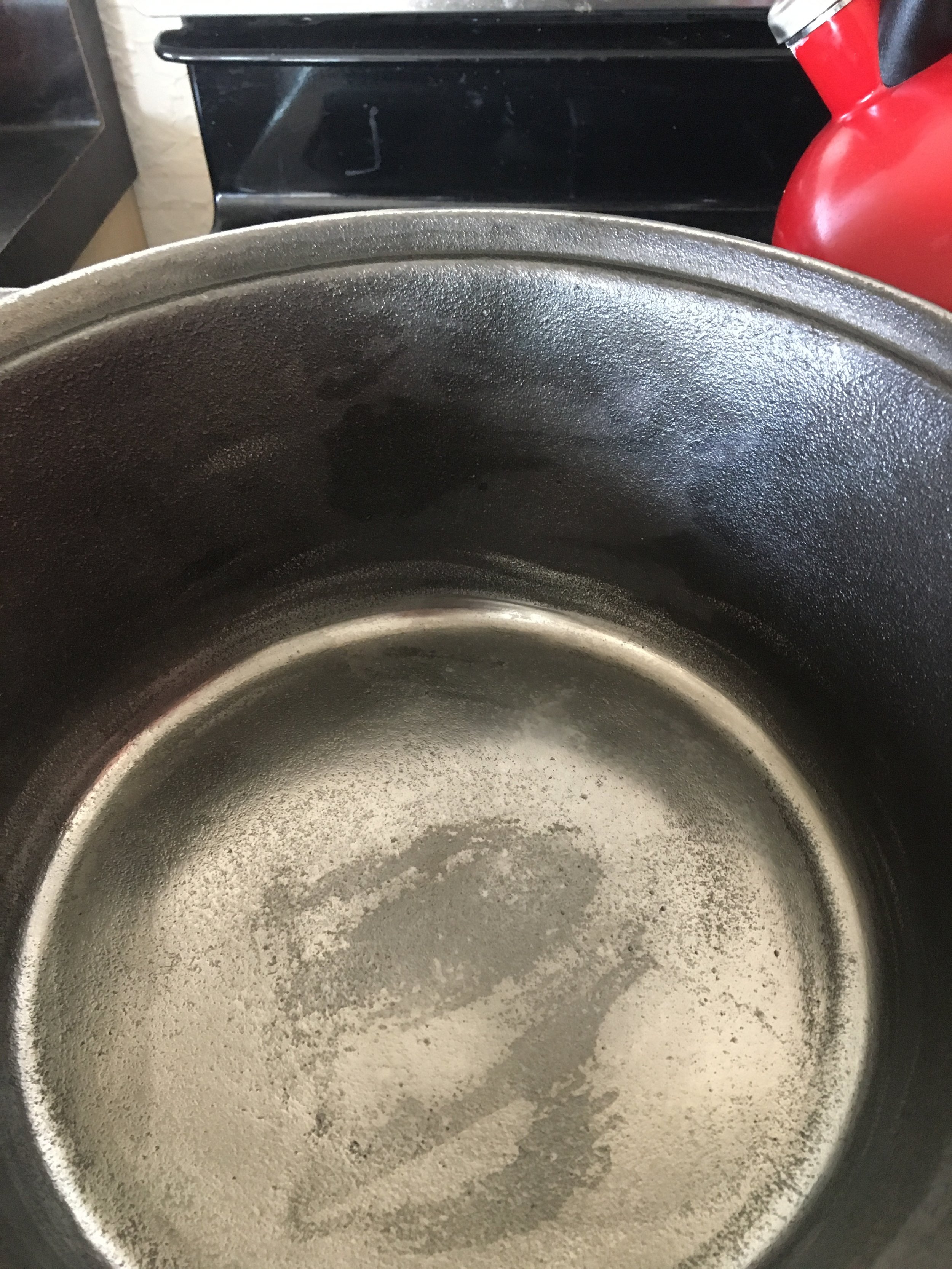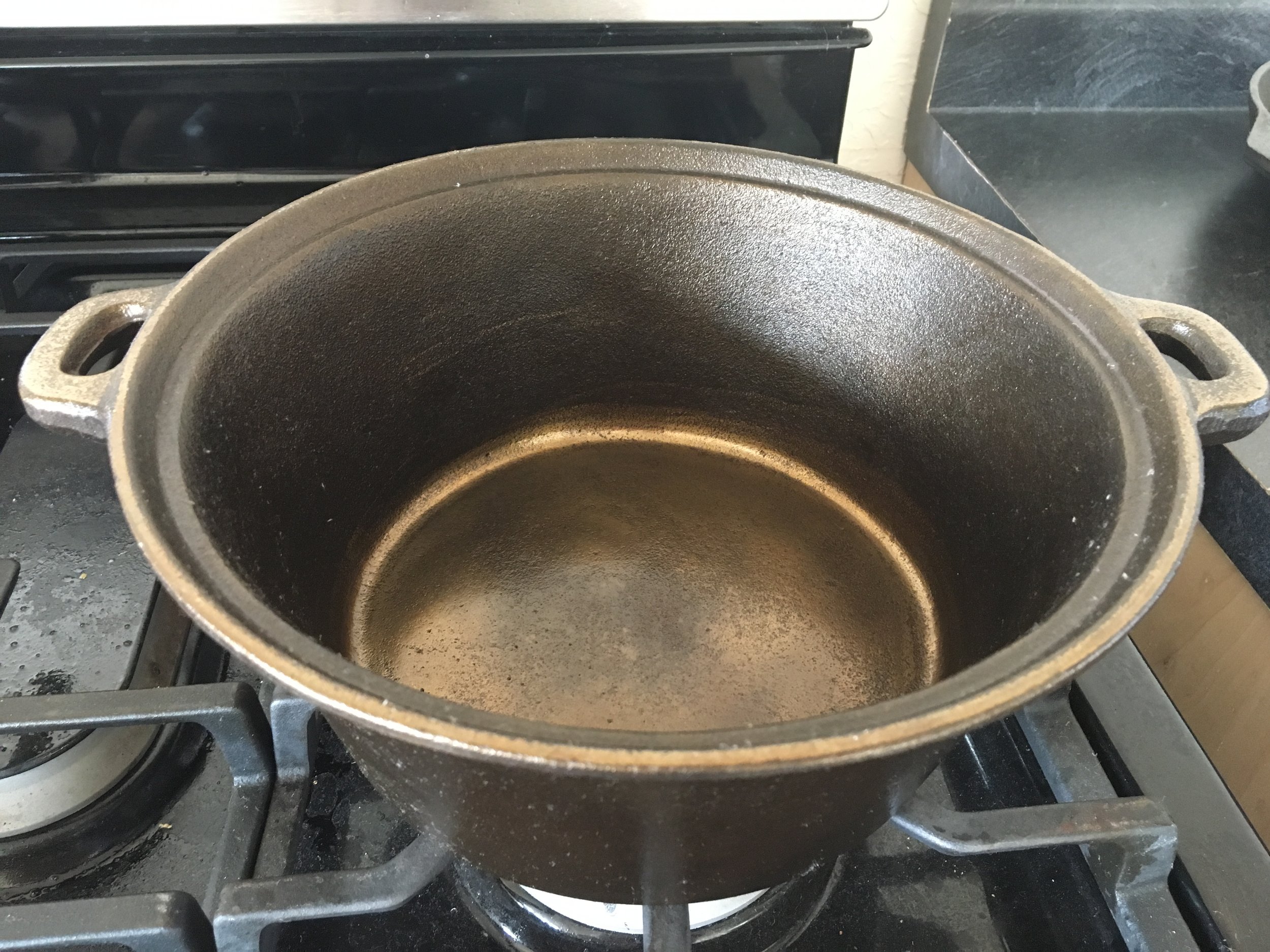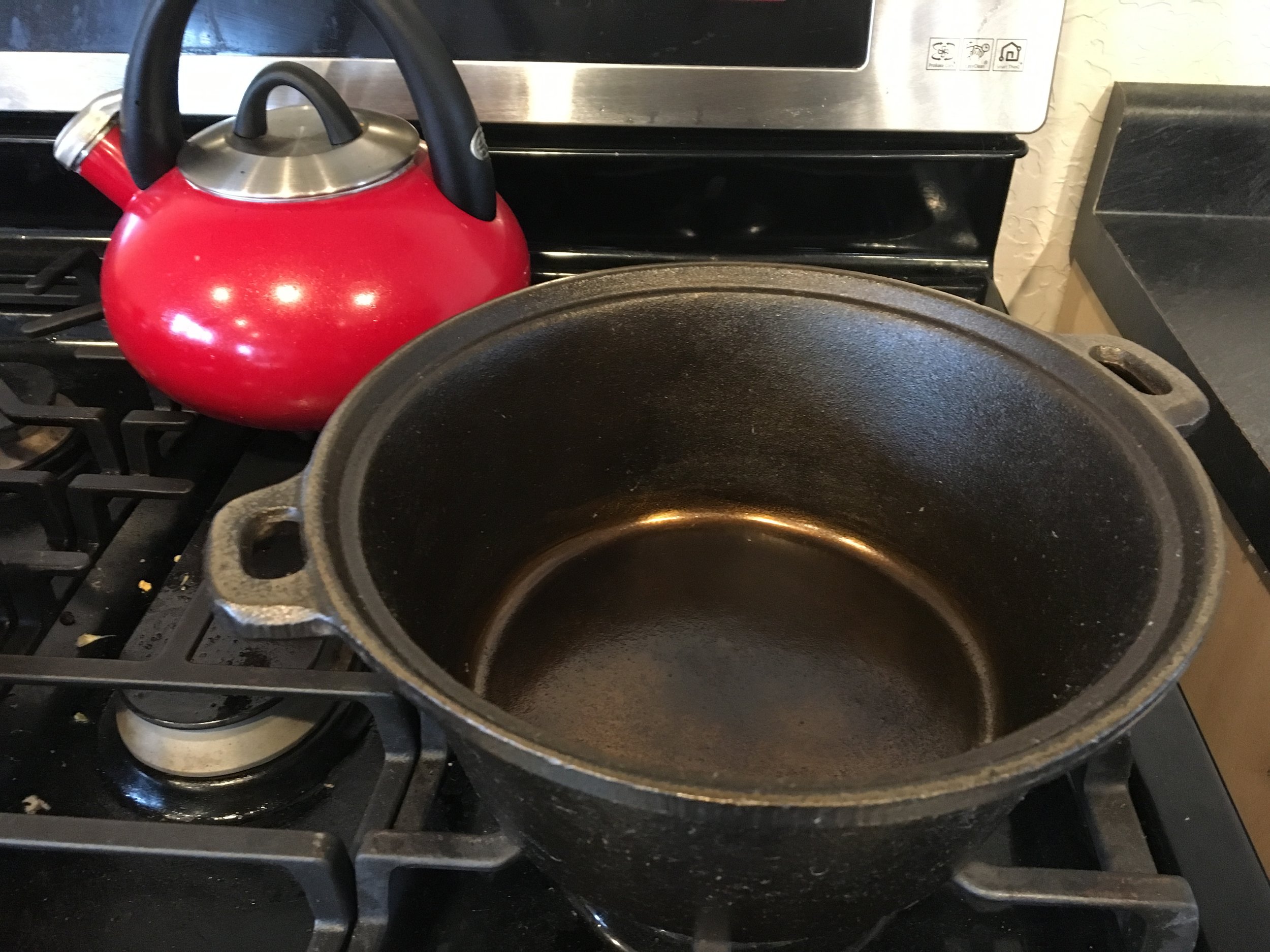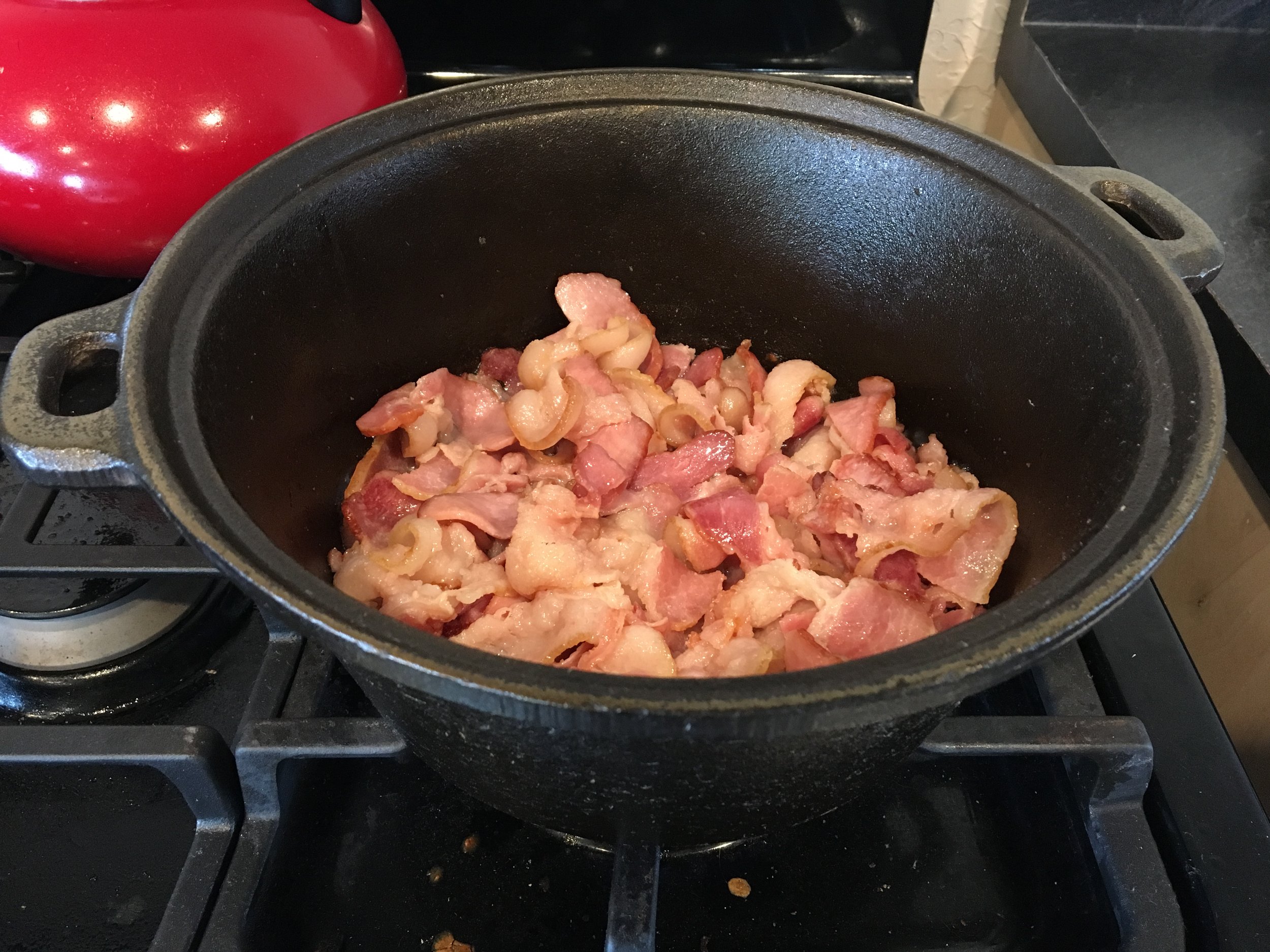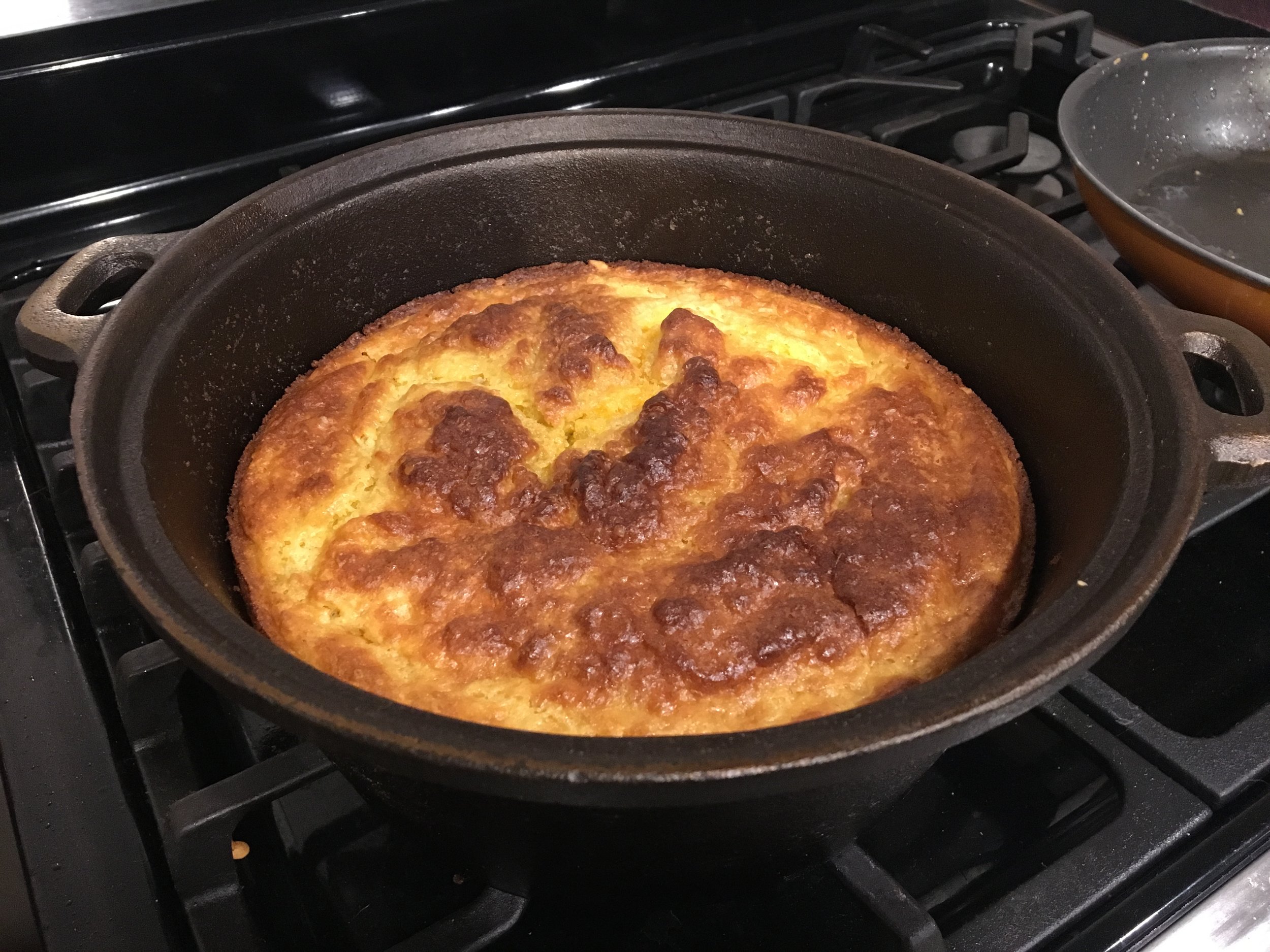Episode 002: Cast Iron Refurbishment
Many of us have childhood memories of cast iron cookware. Whether it was frying fish for a shore lunch in the summer, waking up to the crackle and smoky sweetness of bacon, or a whole meal slow-cooked in a Dutch oven in a backcountry camp amidst yellow aspens in the fall, the greasy blackness of well-seasoned cast iron holds a special place in our hearts. Cooking with cast iron presents some unique challenges, but many rewards.
For centuries, humans created bronze by alloying copper with tin. Bronze was used to make armor, weapons, and tools. At the time, these tools were far more durable than anything crafted of other materials such as bone, wood, or stone. Due to the cost of the raw materials, anything made of bronze would have been a highly prized possession. At some point in history, and estimates of dates range broadly, a new material began to emerge as superior, and the age of bronze gradually came to an end. This new material, iron, could be crafted into a sword that could quite literally cut a bronze sword in half. An iron axe head would hold a sharp edge far longer than a bronze axe head. Occasionally, we would accidentally make an iron item with noticeably unique properties, such as a sword that was stronger, sharper, or could bend without breaking and immediately spring back to shape. It would take many more centuries, though, before we perfected the art of consistently turning iron into something even more marvelous: steel.
At its core, steel is simply iron with a small amount of carbon bound up in it. This can completely change the properties of the iron, making it harder, more flexible, or more resistant to rust. Other elements such as silicon, chromium, or nickel may be added as well, each resulting in certain desired properties. Various iron alloys go by names such as mild steel, high-carbon steel, cast iron, wrought iron, stainless steel, tool steel, and many others.
The material we commonly call “cast iron” is a steel with between two and four percent carbon, and may or may not contain some silicon. Historically, it has been used to make cannons, engine blocks, wood stoves, pipes, bridges, ballast stones for sailing ships, and countless other items. Its desirability for certain applications stems from its relatively low melting point and “castability.” For manufacturing durable items that could be made by pouring molten metal into a sand mold, nothing beats cast iron. Clearly, though, its highest and best use is the beloved cast iron skillet.
My first memory of cast iron cookware was watching my grandfather fry walleye fillets from the fish we caught in the lakes of northern Minnesota. Since then, I have accumulated my own collection of cast iron, learned to cook with it, learned to care for it, and even refurbished a few old, rusty pieces.
With a little bit of patience and care, even a pan that appears to be worthless junk can usually be turned into a prized piece of quality cookware. A cast iron pan does not contain any toxic chemicals; aluminum and Teflon are both highly toxic, and I do not recommend ever using cookware that contains either. Cast iron cookware gets better with use, and will never wear out. With proper care, it is easy to clean, and will maintain its shiny non-stick surface indefinitely. Even if it is neglected and abused, it can be revived with minimal effort. When it comes to versatility, cast iron is unmatched; it performs equally well when used over gas or electric burners, in the oven, on the grill, or over an open campfire. You can even bury a closed pot in the ground with some hot coals to make a backcountry slow-cooker. Finally, I must mention the price. You can easily obtain an entire set of pots, pans, skillets, deep-fryer, bread pans, and a Dutch oven for around the same price as a single professional-grade pan. Most professional chefs, though, would agree that cast iron is actually superior to many of the most expensive pots and pans that money can buy.
Cast iron cookware does not come without a few challenges. First of all, it is heavy; there is nothing you can do to change it; it’s just heavy. Second, there will admittedly be some work involved to get it to where it’s performing well in the kitchen. This can be a bit of a process as you get to know your pan, get a feel for it, and spend some time with it. Exactly how much time will depend on the condition of the pan you’re starting with. Personally, I find the process very rewarding.
If you’ve never experienced cast iron cooking, I challenge you to go out and find your first skillet or pan, go through the process of cleaning and seasoning it, and decide for yourself if the reward is worth the work you put into it. I suspect that before long, you’ll be looking for a second piece as you begin to build your collection.
Additional Show Notes:
Recipe for the cornbread that we make on the show.
Ingredients: 1 1/2 cups corn meal, 1/2 cup flour, 1/2 cup sugar, 2 cups milk, 1 cup buttermilk, 2 eggs, 1 teaspoon baking soda, 1 teaspoon salt, 2 tablespoons butter, shredded cheddar (optional), green chiles (optional).
Preheat oven to 350 degrees F
Melt butter in a cast iron skillet or pan on the stove top
Combine and mix all dry ingredients, followed by all wet ingredients (except one cup of milk)
Optionally, mix a handful of shredded cheese and the green chiles or jalapenos into the batter.
Optionally, melt and brown some of the cheese in the bottom of the pan
Pour batter into pan
GENTLY pour the last cup of milk into the center of the batter
Optionally, top with more cheese
Bake until browned on top and firm (approximately 55-60 minutes)
Let stand 10 minutes, then cut and serve
